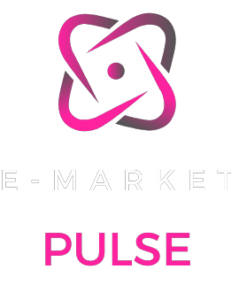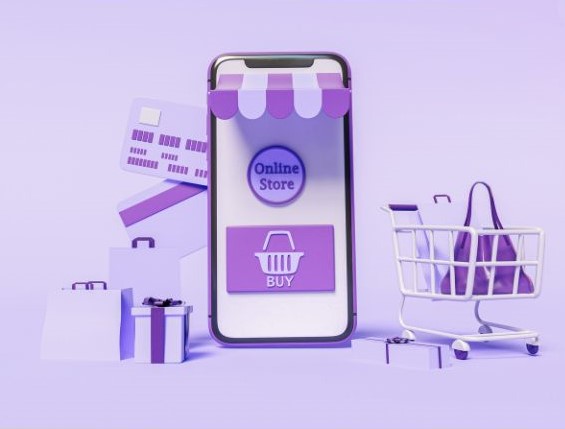

Customize / Brand Your E-Commerce Storefront
Introduction
In the competitive realm of e-commerce, standing out and making a lasting impression is essential for success. One of the most effective ways to achieve this is by customizing your online store’s appearance, aligning it with your brand’s identity, and creating a unique, memorable shopping experience for your customers. This article explores the art of e-commerce store customization, focusing on themes, templates, and branding. We’ll provide valuable insights on how to personalize your store’s look and feel, and share tips on selecting the right themes and templates for different e-commerce platforms.
The Power of E-Commerce Store Customization
Your e-commerce store’s appearance plays a pivotal role in shaping your brand’s identity and customer perception. Here’s why customization is crucial:
- Brand Consistency: Customizing your store ensures that it reflects your brand’s colors, fonts, and overall identity, maintaining consistency across all customer touch points.
- Differentiation: A unique and well-customized store stands out in a sea of generic online shops, helping you differentiate your brand from the competition.
- User Experience: A personalized store enhances the user experience by making it easy for visitors to navigate, find products, and connect with your brand.
- Trust and Credibility: A professional, well-branded appearance instills trust and credibility in potential customers.
- Gain the Mindset Tools to Overcome E-commerce Challenges
Unlock Strategies for Long-Term Success in the Digital Marketplace.
Discover How to Thrive and Adapt in the Ever-Evolving E-commerce World.
- Empower Yourself with the Knowledge to Master Your E-commerce Journey.

Exploring Themes and Templates
When it comes to customizing your e-commerce store, themes and templates are the building blocks. These pre-designed layouts provide the foundation for your store’s design, making it easier to create a visually appealing and functional site. Here’s how to select the right themes and templates for different e-commerce platforms:
1. Shopify:
Shopify is a popular e-commerce platform known for its user-friendly interface and extensive theme options. When selecting a theme for your Shopify store, consider the following:
Free vs. Premium: Shopify offers both free and premium themes. Premium themes often provide more features and customization options, so choose based on your needs and budget.
Mobile Responsiveness: Ensure the theme is mobile-responsive to provide an optimal shopping experience on all devices.
Customization Options: Look for themes that allow for easy customization, including font choices, color schemes, and layout adjustments.
App Compatibility: Check if the theme is compatible with the apps you plan to use for additional functionality.
2. WooCommerce (WordPress):
WooCommerce, a plugin for WordPress, provides extensive flexibility in theme selection. Consider the following when choosing a WooCommerce theme:
WordPress Compatibility: Ensure the theme is compatible with the version of WordPress you’re using.
E-commerce Features: Look for themes designed specifically for e-commerce, offering product pages, cart functionality, and checkout customization.
Integration: Check for seamless integration with WooCommerce, ensuring all e-commerce features work correctly.
Support and Updates: Opt for themes that receive regular updates and provide adequate customer support.
3. BigCommerce:
BigCommerce is a robust e-commerce platform with various theme options. When picking a theme for your BigCommerce store:
Responsive Design: Choose a theme that adapts well to various screen sizes for a seamless mobile shopping experience.
Design Features: Look for themes with design features like mega menus, product sliders, and customizable homepage sections.
SEO-Friendly: Select themes optimized for SEO to improve your store’s visibility in search engine results.
Performance: Opt for themes that are known for speed and performance, as a fast website is crucial for retaining visitors.
Branding Your Store
Customizing your e-commerce store extends beyond themes and templates; it includes branding elements that resonate with your identity. Here’s how to brand your online store effectively:
- Logo and Color Scheme: Incorporate your logo and brand colors consistently throughout your store’s design.
- Typography: Choose fonts that align with your brand’s personality and ensure readability.
- Visual Elements: Use images, graphics, and icons that convey your brand’s message.
- Storytelling: Share your brand’s story, mission, and values through compelling content on your website.
- Social Integration: Connect your store to your social media profiles, making it easy for visitors to engage with your brand.
- Consistency: Ensure brand consistency across all elements, from your homepage to product pages and checkout process.
Customizing Product Pages
Product pages are the heart of your e-commerce store, and customizing them effectively can significantly impact your sales. Consider these strategies for personalized product pages:
- High-Quality Images: Use clear, high-resolution images that showcase your products from different angles.
- Detailed Descriptions: Write informative product descriptions that highlight features, benefits, and usage.
- Customer Reviews: Encourage and display customer reviews and ratings to build trust.
- Related Products: Suggest related products to encourage cross-selling and upselling.
- User-Friendly Layout: Ensure a user-friendly layout that makes it easy for customers to select options, add items to their cart, and complete the purchase.
Optimizing for Mobile
In today’s mobile-driven world, optimizing your e-commerce store for mobile is essential. Most e-commerce platforms provide mobile responsiveness, but you should still check the following:
- Mobile Design: Test your store’s appearance and functionality on various mobile devices to ensure it looks and works as intended.
- Speed: Mobile users are often on slower connections, so prioritize page loading speed to prevent bounce rates.
- Navigation: Ensure that mobile users can easily navigate and access product listings, making the shopping experience smooth.
Conclusion: A Unique and Memorable Online Store
Customizing your e-commerce store, from selecting the right themes and templates to branding elements, is an essential step in creating a unique and memorable shopping experience for your customers. A well-branded, visually appealing store that aligns with your identity not only sets you apart from the competition but also builds trust and loyalty with your audience. Whether you’re selling on Shopify, WooCommerce, BigCommerce, Amazon, eBay or another platform, implementing these best practices will help you master the art of customization, making your online store a true reflection of your brand.
MORE LIKE THIS...
Bringing you the latest information, ideas, products and services for your E-commerce business.
Copyright 2024 E-Market Pulse
Contact Us
We may receive compensation from partners listed through affiliate partnerships, at no cost to you. This doesn’t influence our ratings, and the opinions are our own
Subscribe to our Newsletter
Get updates on products and services specially targeted to help you succeed.
